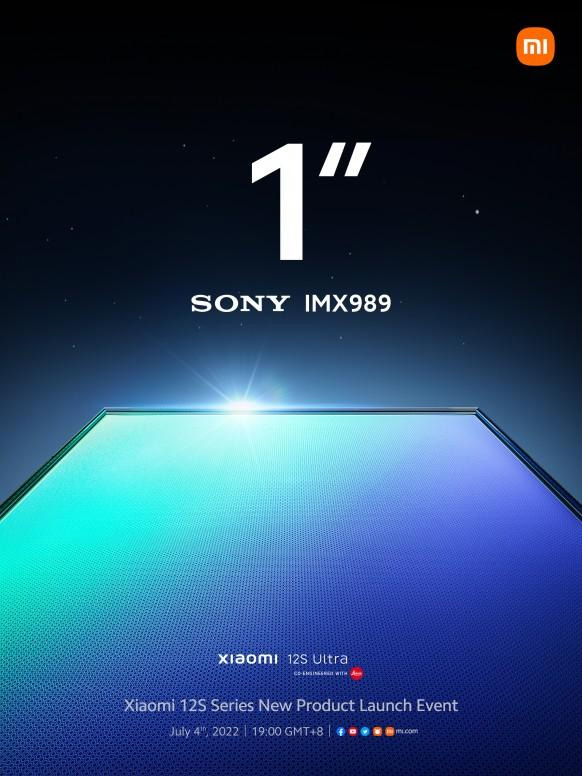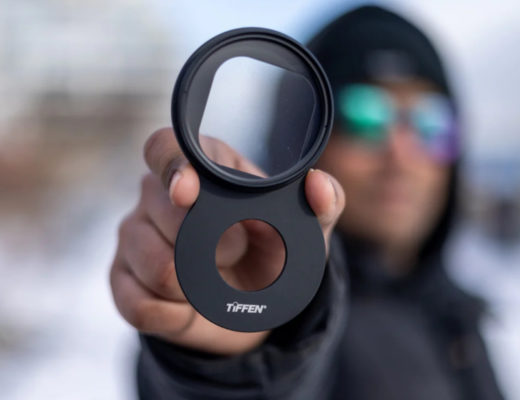 Xiaomi’s new 12S Ultra smartphone, which the company will reveal on July 4, features a Sony IMX989, a 1-inch type image camera sensor that may well change the future of smartphone imaging.
Xiaomi’s new 12S Ultra smartphone, which the company will reveal on July 4, features a Sony IMX989, a 1-inch type image camera sensor that may well change the future of smartphone imaging.
We’ve seen imaging companies, in recent months, promise that the future of photography is just round the corner. Xiaomi and Leica Camera announced, last May, that a new era of mobile imaging is coming, because of their cooperation, of which we may see some results in the upcoming Xiaomi smartphones. In June, Leica and Panasonic announced a partnership that will bring a new imaging world… probably to conventional cameras. This week Samsung confirmed its second 200MP camera sensor for smartphones, named ISOCELL HP3, stating that it offers ““Epic Resolution Beyond Pro”.
Now, making the gap between cameras and smartphones smaller, Xiaomi reveals that the sensor used in its Xiaomi 12S Ultra smartphone is Sony’s IMX989, a 1-inch type image camera sensor designed for mobile devices that may well change the future of smartphone imaging. The company has already declared that, starting July 4, “It’s a new era for mobile photography!”
Sony has not yet officially revealed its new sensor, but this is something that was expected, as the company has, previously, used a 20.1MP 1″ Exmor RS BSI CMOS from the Sony RX100 camera in the Xperia PRO-I. The sensor was optimized for the smartphone and, as we wrote here before, only offers a 12MP coverage (the usual size of smartphone photos), using the center area of the sensor. Now, if you’re a bit confused about the size of a 1-inch type sensor – sometimes also referred as 1 inch sensor – here are the dimensions of this sensor: about 8.8 x 13.2mm.
 1-inch type sensor is not one inch
1-inch type sensor is not one inch
It’s clear, now that you know the dimensions, that a 1-inch type sensor is much smaller than a Micro Four Thirds sensor – which has 13 x 17.3mm – an APS-C sensor – at 14.8 x 22.2mm (Canon) – or the reference 35mm represents, with its 24 x 36 mm. Still, it’s bigger than the camera sensor most smartphones use, so it’s a step forward that it’s being used. If you’re really curious about “The hypothetical TRUTH about the 1 inch sensor”, the video by Philip Bloom, which will take some 30 minutes to watch, will guide you through the history of it all.
Although some say this new sensor – which will be only used for the main camera – has 50MP, others point to 100MP, but we all will have to wait until July 4 to see what the Xiaomi 12S Ultra smartphone uses. With Samsung already proposing two different 200MP sensors, some believe more pixels “is the way to go”, although many others believe 50MP is ideal for smartphones, as optical systems continue to be a weak part of the equation.
We’ve already shared here at PVC, before, another aspect that we believe is crucial for smartphones designed with photographers and videographers in mind: the use of sensors with similar values – like the 50MP triple array used in the Xiaomi 12 Pro, or the three 64MP cameras in the ZTE Axon 40 Ultra smartphone, which point to a tendency that is most welcome by those wanting to use smartphones as cameras. It is expected that Xiaomi follows the same logic with the upcoming 12S Ultra smartphone.
 No crop, says Xiaomi
No crop, says Xiaomi
One question remains, though, regarding the Xiaomi 12S Ultra: how much of the 1-inch type sensor is being used? Remember that Sony only used a section of the 1-inch type sensor applied to the Xperia PRO-I to create 12MP final photos. The Leitz Phone 1 and the Sharp Aquos R6 also feature a 1-inch type sensor but still only use a section of its area. Has Xiaomi, working with Leica, found a way to use the whole sensor, and if so, what’s the size of the lens?
The images now made available by Xiaomi don’t tell the whole story, so we will have to wait a few more days, but Xiaomi claims that the custom Sony IMX989 sensor is used with no crop… adding that (and this is machine translated from Chinese) “Compared to iPhone 13 Pro Max, the light-sensitive area is increased by 172% and the light-sensitive capability is increased by 76%, while the photo speed is increased by 32.5% and the boot speed is increased by 11%. Sony IMX989+Leica+Xiaomi Imaging Brain, the pearls complement each other”.
The truth is that Sony is busy developing different sensors, and it’s only natural that developments in one area end being applied in other segments. The company recently announced its new image sensor with Pregius Technology, the 127Mpixel IMX661, part of a group of CMOS sensor global shutters which is suitable for high-precision inspection of moving objects, industrial imaging and sensing contexts, such as traffic monitoring and infrastructure inspection.
IMX989 development cost $15 million
Regarding its large CMOS image sensor family, Sony says that “there are many products to choose from, with either a global shutter or a rolling shutter” and notes that its application extends beyond manufacturing, into wide-area monitoring, aerial photography, agriculture, infrastructure inspection, and other areas that require high resolution imaging.
 Sony Semiconductor Solutions Group, which integrates image sensors, believes that “the growth in this area is estimated mainly driven by multiple lens and larger sensors. The sensing capabilities are also expected to become a significant contributor in a medium to long-term perspective. In AV applications, the overall market share is decreasing, but the highly value-added segment is growing” but the company that actually has the world’s top share (on the revenue basis) at 49% of the entire market, wants to “stay focused on image sensors, pursuing further advances in our leading imaging and sensing technology and ensuring growth in each market segment.”
Sony Semiconductor Solutions Group, which integrates image sensors, believes that “the growth in this area is estimated mainly driven by multiple lens and larger sensors. The sensing capabilities are also expected to become a significant contributor in a medium to long-term perspective. In AV applications, the overall market share is decreasing, but the highly value-added segment is growing” but the company that actually has the world’s top share (on the revenue basis) at 49% of the entire market, wants to “stay focused on image sensors, pursuing further advances in our leading imaging and sensing technology and ensuring growth in each market segment.”
The Sony IMX989 that will be inside the Xiaomi 12S Ultra smartphone may well be a sign of new things coming from Sony in the near future, as new models from its own Xperia mobile devices are expected. What we know for now, courtesy of Xiaomi’s page on Weibo (and a quick machine translation of the Chinese original) is that the “IMX989 development cost $15 million, with Xiaomi and Sony each bearing half of the cost”, and that after the debut of the sensor on the Xiaomi 12s Ultra, the Sony IMX989 will be available for use “by our domestic counterparts to jointly promote the advancement of mobile imaging.”

Filmtools
Filmmakers go-to destination for pre-production, production & post production equipment!
Shop Now















